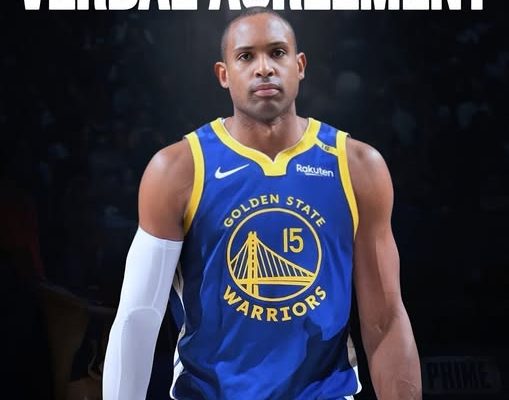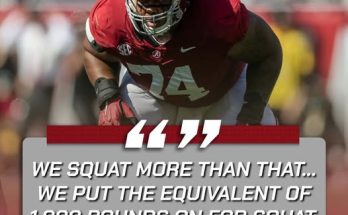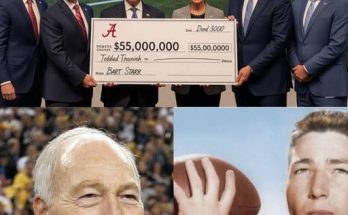The Golden State Warriors making a verbal agreement with NBA champion Al Horford is the kind of move that sends shockwaves throughout the league, not because it’s flashy or headline-grabbing in the same way as landing a superstar in his prime, but because it perfectly aligns with the franchise’s championship DNA. Horford, a seasoned veteran with an impeccable reputation for leadership, defensive acumen, and high basketball IQ, brings an element of maturity and steadiness that could prove invaluable to a Warriors roster already rich with offensive firepower but seeking a deeper, more balanced identity. This move, though still verbal at the moment, underscores the Warriors’ intent to build not just for talent but for fit, culture, and playoff survivability in the grueling Western Conference gauntlet.
Horford’s career has been defined by his ability to elevate every team he’s been on without necessarily dominating the box score. At 38 years old, the former Boston Celtics big man remains one of the league’s most respected floor-spacers and defensive anchors, capable of guarding multiple positions and facilitating from the high post. His playoff pedigree, honed over years of deep postseason runs, meshes seamlessly with Golden State’s championship mentality, and the Warriors know that while younger players might offer more athleticism, few can match Horford’s understanding of the moment, his ability to make the right read, and his composure when games hang in the balance. The Warriors have been looking for that exact kind of steadying force in the frontcourt, particularly after recent seasons where injuries and roster imbalances left them vulnerable in the paint.
From a tactical standpoint, Horford’s addition could be a quiet masterstroke. Golden State thrives on movement, spacing, and unselfish passing—three hallmarks of Horford’s game. His ability to stretch the floor as a credible three-point shooter forces opposing bigs out of the paint, opening lanes for Stephen Curry, Klay Thompson, and Jimmy Butler, their newly acquired star, to attack. On defense, his mobility allows him to execute switches effectively, a key part of the Warriors’ defensive scheme, and his communication on that end will only strengthen the team’s rotations. Even more important is the fact that Horford doesn’t need heavy usage to impact the game. He can blend into the background offensively for stretches, only to step forward with a timely corner three, a perfectly timed block, or a quick outlet pass that ignites a fast break.
It’s worth noting that Golden State’s front office has been shifting toward a win-now approach that still respects their core’s aging curve. They’ve surrounded Curry with not just scorers but versatile, playoff-ready veterans who understand their roles and won’t require the offense to be restructured around them. Horford fits that mold perfectly. He’s not arriving in San Francisco to be the focal point—he’s coming to be the glue, the connector, the piece that ensures the Warriors don’t fall apart in moments when the stars are resting or when playoff matchups demand a lineup change. He’s been in those situations countless times, often delivering exactly what was needed without any fanfare.
There’s also a leadership angle that cannot be overlooked. Draymond Green, for all his intensity and impact, has had moments where his emotional fire spills over. Horford’s calm, measured approach provides a counterbalance, an additional veteran voice who can keep the locker room focused and grounded when tensions run high. In a long season where championship aspirations can create both pressure and friction, having a figure like Horford—who has been universally praised by coaches, teammates, and even opponents—could be just as important as his on-court production. His experience leading young cores in Atlanta, mentoring stars in Boston, and adjusting to various team dynamics across his career makes him uniquely suited to thrive alongside Golden State’s mix of veterans and developing talent.
On the court, the potential pairing of Horford with Draymond Green in the frontcourt is intriguing. Both players are exceptional passers for their size, capable of initiating offense and keeping the ball moving. A Horford–Green tandem would give the Warriors two playmaking bigs who can defend multiple positions, allowing them to maintain their trademark small-ball principles without fully sacrificing size and rebounding. Against bigger Western Conference opponents like Denver and Minnesota, Horford offers another body to throw at elite centers, while against faster, perimeter-heavy teams, he can slide into a more mobile defensive scheme without becoming a liability. This flexibility is exactly what Golden State has lacked in recent years, as they’ve often been forced into unfavorable matchups when their smaller lineups couldn’t keep up physically.
The verbal nature of the agreement also highlights how carefully Golden State’s front office is managing its cap space and roster construction. Given Horford’s age, this is likely a short-term deal, perhaps structured to minimize long-term financial risk while still giving the team maximum immediate impact. The Warriors’ championship window is still open but narrowing, and every signing has to be calculated. In Horford, they’re getting a low-risk, high-reward veteran who has shown remarkable durability and adaptability. While he’s not the same athlete he was a decade ago, his game has aged gracefully because it’s built on fundamentals, positioning, and skill rather than sheer explosiveness.
The emotional impact of this signing could also ripple beyond the court. Horford is widely admired for his professionalism and consistency, qualities that young Warriors like Jonathan Kuminga and Moses Moody can learn from. If Golden State hopes to bridge the gap between their veteran stars and their next generation of talent, adding someone like Horford is a strategic mentorship move. His work ethic, attention to detail, and willingness to accept whatever role is necessary to win are exactly the traits the Warriors want to instill in their developing players.
In the broader Western Conference picture, this move could also be about matching up with specific playoff opponents. The Denver Nuggets’ Nikola Jokić, the Minnesota Timberwolves’ Karl-Anthony Towns and Rudy Gobert, and the Los Angeles Lakers’ Anthony Davis all present unique challenges that require both size and defensive intelligence. Horford has battled those kinds of players for years, often holding his own through a combination of strength, timing, and basketball IQ. The Warriors understand that winning in the West requires multiple defensive looks, and Horford gives them that flexibility without compromising their offensive flow.
The intangible factor of playoff experience might be the most important. Horford has played in high-pressure elimination games, conference finals, and the NBA Finals. He knows the grind of the postseason, the physical and mental adjustments required from series to series, and the importance of every possession. When the Warriors inevitably face those razor-thin margins in a Game 6 or Game 7, having someone who won’t panic, who will execute the game plan, and who can make the subtle plays that swing momentum could be the difference between moving on and going home.
From the outside looking in, some might see this as a minor move, the acquisition of an aging role player in the twilight of his career. But for the Warriors, this is the type of under-the-radar signing that has defined dynasties. It’s about building a roster that can win in different ways, that can adapt to different opponents, and that has the collective mental toughness to survive the chaos of a deep playoff run. Horford’s presence won’t make nightly highlight reels, but the impact will be felt in the form of steadier defense, cleaner offensive execution, and a more composed team in crunch time.
In essence, the verbal agreement with Al Horford is Golden State’s way of saying they’re serious about maximizing every ounce of their championship potential while their core still has gas in the tank. It’s not just about chasing stars—it’s about adding the right stars in the right roles. And as history has shown, sometimes the players who do the little things best are the ones who make the biggest difference when the stakes are highest. Horford may not be the flashiest signing of the offseason, but for a Warriors team that knows the value of experience, versatility, and composure, he might just be the smartest.
If this deal is finalized, expect Horford to blend seamlessly into Golden State’s rotation, providing just enough offense, just enough defense, and more than enough leadership to tip the scales in their favor in the moments that matter most. In a league where every contender is looking for an edge, the Warriors may have just found theirs in the form of a calm, unshakable veteran who knows exactly how to win. For Golden State, it’s veteran gold indeed.



